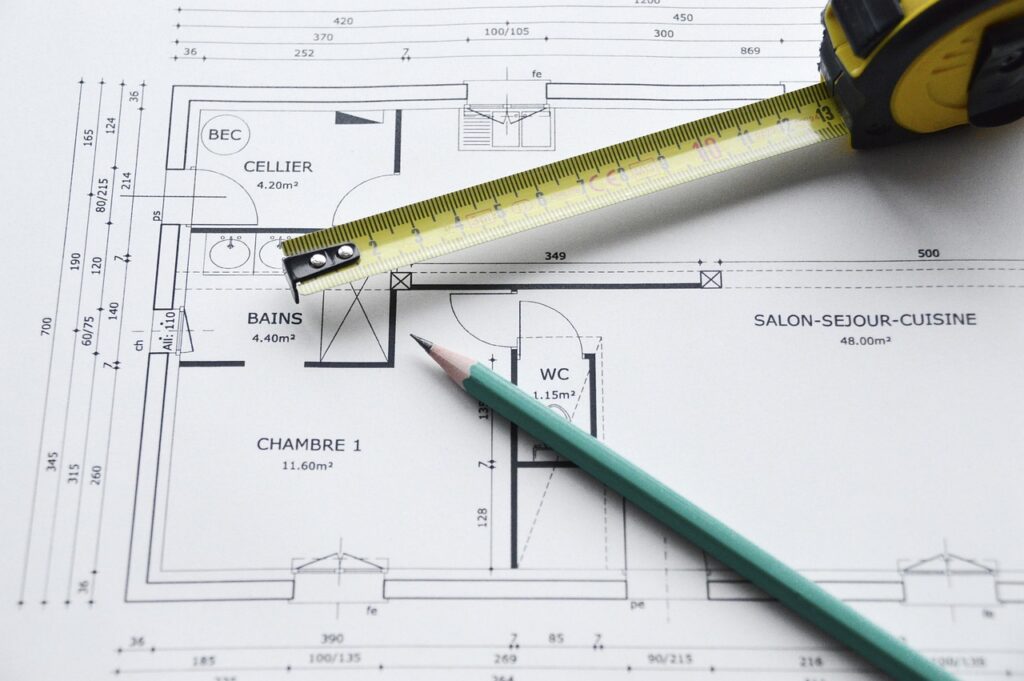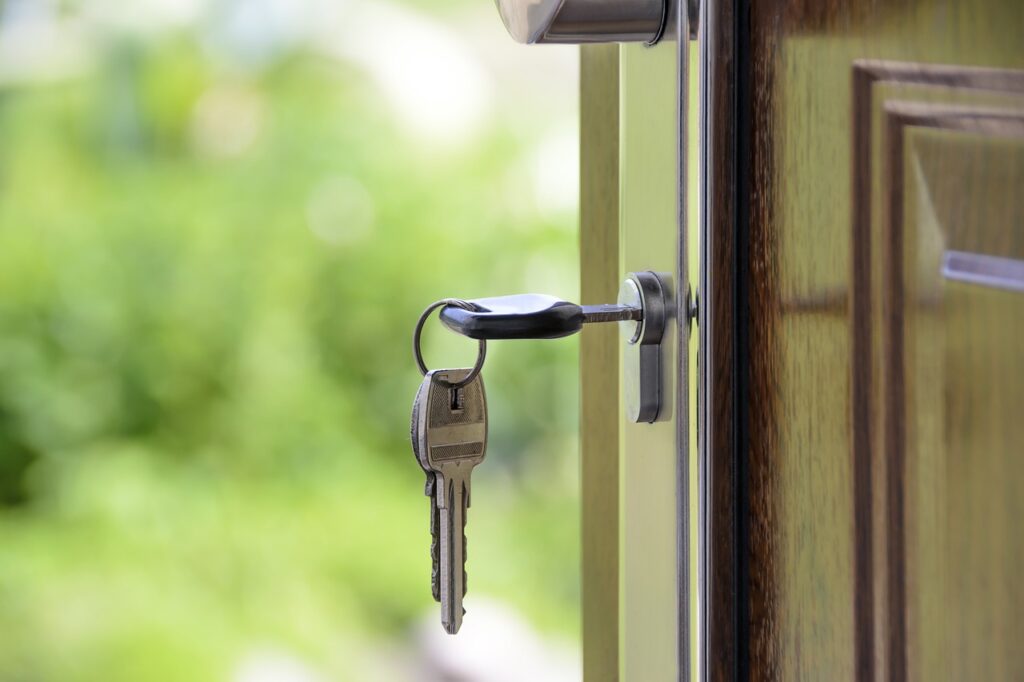Managing a construction site from a distance, particularly as an international investor, may seem overwhelming, but with today’s technology and the right approach, it’s entirely achievable. Being far away from your project in Thailand doesn’t mean losing control over its progress. In fact, with a solid communication strategy, the use of real-time technology, and a reliable local team, you can ensure that every detail is handled professionally. Whether it’s staying on top of construction timelines or making important decisions remotely, managing a site effectively from afar hinges on smart delegation, clear planning, and strong coordination.

In this article, we’ll explore actionable tips to help you confidently manage your construction project, ensuring that your investment thrives despite the physical distance.
Choose the Right Local Team
One of the most critical aspects of managing a construction project from a distance is ensuring you have a reliable and experienced local team. Your project manager, contractors, and architects become your eyes and ears on the ground, so their expertise and communication skills are crucial to the success of your build.
Hire a Trustworthy Project Manager
A project manager is your primary point of contact and the key to keeping your project on track. They oversee the day-to-day operations, manage the construction timeline, and ensure that the project adheres to both your vision and local regulations. Choosing someone with experience managing similar projects in Thailand is essential because they’ll understand local challenges such as weather conditions, labor availability, and navigating the permit processes.
A trustworthy project manager should provide regular updates, either through weekly video calls, reports, or site photos, ensuring you’re aware of the progress without needing to be on-site. This professional will also handle issues that arise—such as delays or unexpected costs—minimizing the burden on you as a remote investor. Establishing clear communication channels and expectations from the outset ensures that you and the project manager are aligned every step of the way.
Vet Your Contractors
In addition to a capable project manager, choosing the right contractors is equally essential for your project’s success. A reliable contractor should have a proven track record of delivering quality work on time and within budget. It’s important to request examples of previous projects, check references, and ensure they have experience with the type of construction you’re undertaking—whether it’s a villa, a commercial property, or a custom-built home.
Working with contractors who are familiar with building regulations in Thailand can save time and prevent complications. Contractors who understand local laws will help ensure that your project complies with safety standards, zoning laws, and environmental requirements. This can help you avoid delays due to permit issues or substandard work that doesn’t meet local codes. Taking the time to properly vet your contractors will help you feel confident in their ability to execute the project while you manage remotely.
Utilize Technology for Real-Time Monitoring
Managing a construction site remotely becomes far more manageable with the right technology. Modern tools can streamline communication, provide real-time updates, and ensure that you are always informed about the progress of your project, no matter where you are in the world.
Use Construction Management Software
Construction management software has revolutionized remote project oversight, offering an organized platform for all aspects of the construction process. Tools like Procore, Buildertrend, and CoConstruct enable you to track progress, manage schedules, review budgets, and store important documents in one centralized location. These platforms increase transparency, allowing all stakeholders, from contractors to architects, to stay connected and aligned.
The ability to access live data in real time minimizes the risk of miscommunication and ensures that any delays or issues can be addressed promptly. The mobile functionality of many of these platforms means you can check project status from your phone or tablet, giving you flexibility in managing the site wherever you are.
Implement Video and Photo Updates
Requesting regular video and photo updates is a practical way to keep a visual record of the progress on-site. Weekly or bi-weekly video walkthroughs allow you to observe the project’s current state, helping you catch any potential issues early on and maintain control of quality, even from a distance.
Using drones to capture aerial footage has also become increasingly popular for large-scale developments. Drones provide comprehensive aerial views that give investors a full perspective of the construction site, helping you see areas of the project that might otherwise be difficult to assess through traditional video alone. This advanced technology provides a cost-effective way to get a complete picture of the work being done.
Ensure Clear Communication and Reporting
Clear and consistent communication is essential when managing a construction project from afar. By setting up structured reporting methods and regular check-ins with your team, you can ensure transparency, address potential issues early, and maintain control over the project’s progress.

Set Regular Updates and Check-Ins
To stay fully informed, establish a schedule for regular updates with your project team. This can include daily or weekly emails, scheduled video calls, or bi-weekly status reports. Consistency is key to preventing surprises and allowing you to make timely decisions. These check-ins ensure that you remain aware of key developments, upcoming deadlines, and any obstacles that could delay the project.
Additionally, it’s crucial to establish a protocol for urgent matters. This involves outlining clear steps for your team to reach you quickly in the event that a critical decision is needed. Make sure your team provides you with detailed, up-to-date information to make informed decisions in real-time, avoiding delays that could affect the overall timeline or budget.
Detailed Progress Reports
In addition to regular communication, requesting detailed progress reports ensures that you have a comprehensive view of how your project is advancing. These reports should cover important aspects like completed milestones, any deviations from the planned schedule, and budget tracking.
A well-organized progress report will highlight achievements, but more importantly, it will flag concerns early on. This allows you to tackle issues—such as delays due to weather, supply shortages, or other unforeseen problems—before they escalate. Proactive reporting helps you stay in control, maintaining both the project timeline and the overall cost within the set budget.

Heveatecture: A Partner You Can Trust for Remote Site Management
Managing a construction site from a distance can be daunting, but Heveatecture offers tailored services that make the process seamless for international investors. Understanding the unique challenges that come with overseeing a project remotely, Heveatecture provides comprehensive construction management solutions, ensuring that every phase of your build is carefully monitored, even if you’re thousands of kilometers away.
Real-Time Photo and Video Reporting
At Heveatecture, we believe that clear and consistent communication is key to successful project management. For clients who cannot be on-site, we offer detailed photo and video reports throughout the entire construction process. These reports provide an up-to-date, visual account of your project’s progress, allowing you to see every milestone without having to travel. Whether it’s the foundation being laid or the final touches on the interior, you’ll receive regular updates that keep you informed and confident in the quality of the work.
Our dedicated team captures every significant development and any potential issues, ensuring complete transparency and minimizing the risk of delays or unexpected problems. This proactive approach helps you stay in control, no matter where you are in the world.
Comprehensive Support for Remote Investors
Beyond visual reporting, Heveatecture also acts as your on-the-ground liaison, managing all the crucial aspects of the project. We coordinate directly with local contractors, ensure that materials meet the highest standards, and oversee that building regulations are strictly followed. Our goal is to take the stress out of remote construction management, allowing you to focus on your investment with peace of mind.
With Heveatecture, you’re not just receiving updates—you’re gaining a trusted partner dedicated to delivering your vision. We take pride in making sure your project runs smoothly from start to finish, offering a level of care and attention that ensures your villa or development is completed on time and to the highest standards.
Plan for Potential Delays and Issues
No construction project is without challenges, especially when managed remotely. Anticipating potential delays and complications is essential for ensuring your investment stays on track and within budget.
Factor in Local Challenges
Managing a construction project in Thailand comes with unique challenges, particularly due to the country’s tropical climate. The rainy season, which typically runs from May to October, can lead to unexpected delays as heavy rains slow down outdoor work or cause disruptions in material deliveries. In addition to weather-related issues, factors such as labor strikes or material shortages can affect your project’s timeline.
To mitigate these risks, it’s important to factor potential delays into your planning. Build a buffer into your project schedule to account for slower work periods or supply chain interruptions. Maintaining open lines of communication with your project manager and contractors will allow you to stay informed and adjust timelines accordingly. Having contingency plans in place ensures that delays don’t lead to a cascade of missed deadlines or unnecessary stress.
Budget for Contingencies
No matter how well-planned your construction project is, unforeseen costs are almost inevitable. Whether it’s a sudden increase in material prices, the need for additional labor, or unexpected design changes, these additional expenses can quickly add up.
To avoid being caught off guard, it’s critical to include a contingency budget in your financial planning. Most experts recommend setting aside at least 10-15% of the project’s overall budget to cover unforeseen costs. This financial buffer allows you to absorb any unexpected expenses without needing to cut corners or delay the project. By preparing for potential cost overruns, you can ensure that your project remains on course and that the final quality isn’t compromised.
Visit the Site When Possible
While modern technology and clear communication can help you manage your construction site remotely, there’s no replacement for actually being on-site. Visiting the construction site in person allows you to see the progress with your own eyes, address potential concerns early, and build rapport with your project manager and contractors.
Plan Strategic Visits
When planning site visits, it’s important to be strategic. Rather than visiting frequently, focus on key milestones in the project timeline, such as the completion of the foundation, framing, or roofing stages. These critical phases often reveal the most about the overall quality and progress of the project. Being there in person allows you to review the work done so far, ask questions, and ensure that your vision is being executed correctly.
Moreover, in-person visits help to foster stronger relationships with your local team. Building trust with your contractors and project manager is key to ensuring smooth progress. Face-to-face meetings often allow for more transparent communication and give you the opportunity to clarify expectations or resolve any concerns that may arise.
If visiting the site isn’t feasible due to travel restrictions or other commitments, consider hiring a trusted third party, such as an independent inspector, to visit on your behalf and provide you with detailed reports.

Conclusion
Successfully managing a construction project remotely, especially in Thailand, is achievable with the right approach. By selecting a reliable local team, leveraging technology for real-time monitoring, and setting up clear communication protocols, you can stay in control of the project’s progress from anywhere in the world.
Preparing for potential delays, maintaining a contingency budget, and planning occasional site visits ensure that you stay on top of the construction process while keeping your investment safe. With careful planning and collaboration, remote site management can be a smooth and effective strategy, helping you bring your project to completion on time and within budget.
FAQ
The most crucial role is the project manager, as they act as your on-site representative, overseeing day-to-day operations and ensuring the project stays on schedule.
Using construction management software like Procore or Buildertrend allows you to track progress, manage budgets, and access reports in real-time from anywhere.
Establish regular communication with your project manager, request weekly video updates, and utilize detailed progress reports to monitor the status of your project.
You should factor in local challenges such as weather conditions, especially during the rainy season, and build a buffer into your timeline to account for potential disruptions.
Yes, with the right technology and a reliable team, it is possible to manage a construction project remotely. However, visiting the site at key milestones is highly recommended.
Look for a project manager with experience in similar projects, excellent communication skills, and a good track record of delivering projects on time and within budget.
Always have a contingency budget of 10-15% to cover unforeseen costs, and ensure that your team provides regular financial updates to avoid surprises.
Regular photo and video updates from your project manager and site visits can help ensure the quality of the work being done.
Progress reports should detail milestones, potential delays, current budget status, and any issues or risks that may impact the project timeline.
Ensure your project manager or local contractors are familiar with Thailand’s construction regulations and can handle the necessary permits on your behalf.
